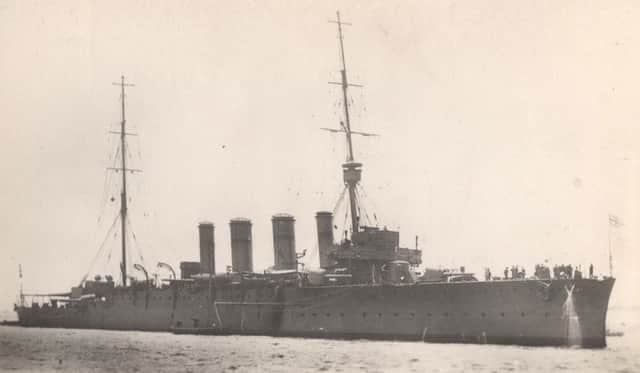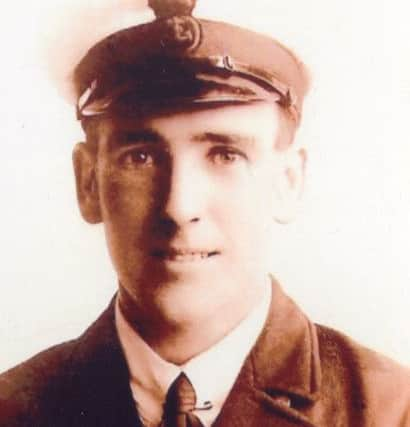Albert leads a '˜charmed life' in the hell that was Jutland


But I have been given access to a journal written the day after the battle ended by a serving sailor aboard HMS Southampton. It belongs to Sarah Pilbeam, of Widley, the granddaughter of writer Chief Petty Officer Albert Symonds.
I cannot include the full journal here but I have extracted some of his detailed eye witness accounts of the battle. His story continues next week.
Advertisement
Hide AdAdvertisement
Hide AdAlbert William Garland Symonds was the fifth of seven children born to William and Emily Symonds on July 2, 1888.


He was educated at the Royal Hospital School, Greenwich, and served 25 years, retiring as a chief writer.
Albert begins his notes at 6pm on the evening of Friday, June 2, 1916. The battle raged from May 31 to June 1.
He wrote: ‘The action commenced at 2.30pm on May 31. At 14.40 Galatea sighted two enemy light cruisers and made smoke and reported her sighting.
Advertisement
Hide AdAdvertisement
Hide Ad‘We held an easterly course until 3.55pm when our own battle cruisers came into line. Steering south, with the Lion leading the column, they at once opened fire.


‘We were on the Lion’s starboard bow and as soon as we opened fire the Germans did so as well. All we could see of the action was a series of flashes on the horizon. The German shooting was very good.
‘At 4.15pm I was horrified to see a colossal column of grey-white smoke stand on the water where Indefatigable had been. The column of smoke was about 700ft high expanding into a great mushroom. The base of the stalk was a fiery red and I realised Indefatigable had blown up.
‘Shortly after, the battle-cruiser HMS Queen Mary was also obliterated by an 800ft-high mushroom of fiery smoke and I caught a momentary but clear glimpse of her hull standing clear of the water from her stern to her after funnel. In this case I can remember seeing bits of her flying upward.
Advertisement
Hide AdAdvertisement
Hide Ad‘For the following hour, 5pm to 6pm, I can truthfully say I thought each succeeding minute was our last. For that hour we were under persistent 11in shellfire from the rear of the German fleet. That is to say, all the German battleships which could not get to our battleships thought they might as well while away the time by knocking us out.
‘Needless to say we could not fire a shot in return as the range was about 16,000 yards, way beyond our guns.
‘I crouched behind the 1/10in plate of the after control with Hayward, Booth and Clark and we gnawed on bully beef.
‘Forty large shells fell within 75 yards of us in an hour and many others some distance out. We seem to be living a charmed life.
Advertisement
Hide AdAdvertisement
Hide Ad‘Shortly after, being half-a-mile ahead of Lion, I saw a shell hit her midship port turret putting it out of action and causing a fire. I understand this single shell accounted for the greater number of those killed, 109.’